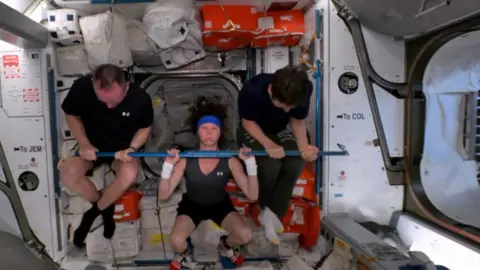Printing tech from UK university could go to Mars
Components used in a 3D printer that could be used on future missions to Mars were developed by scientists at a Bedfordshire university.
Cranfield University helped to develop the 3D printer in collaboration with Airbus before it was sent to the International Space Station in January, where astronauts printed a metal part in space for the first ever time.
Experts at the university were involved in designing and developing the printer's critical components, including the melting process, hardware, and laser source.
The UK Space Agency said the technology could be used in missions to the Moon or Mars where resupplying is usually difficult.
Dr Wojciech Suder, who led the design team, said: "We hope to determine whether Earth-based printing algorithms can be directly applied in space.
"This information is crucial for ensuring the reliable and efficient production of high-quality components in space."
The printed metal parts have been sent back to earth so scientists from various European research institutions can analyse how the printing process may have been affected by microgravity.
Andrew Kuh, head of exploration technology at UK Space Agency, praised the technology: "This ground-breaking accomplishment of 3D printing metal in microgravity is a crucial step to longer duration space missions."
"Manufacturing components, tools, and spare parts on-demand in space will help overcome the logistical challenges of extended missions to the Moon and Mars where rapid resupply is not an option.
"Cranfield University has world-class expertise, and this is a great example of how the UK provides key technology for humanity's exploration of the solar system."
Follow Beds, Herts and Bucks news on BBC Sounds, Facebook, Instagram and X.








































